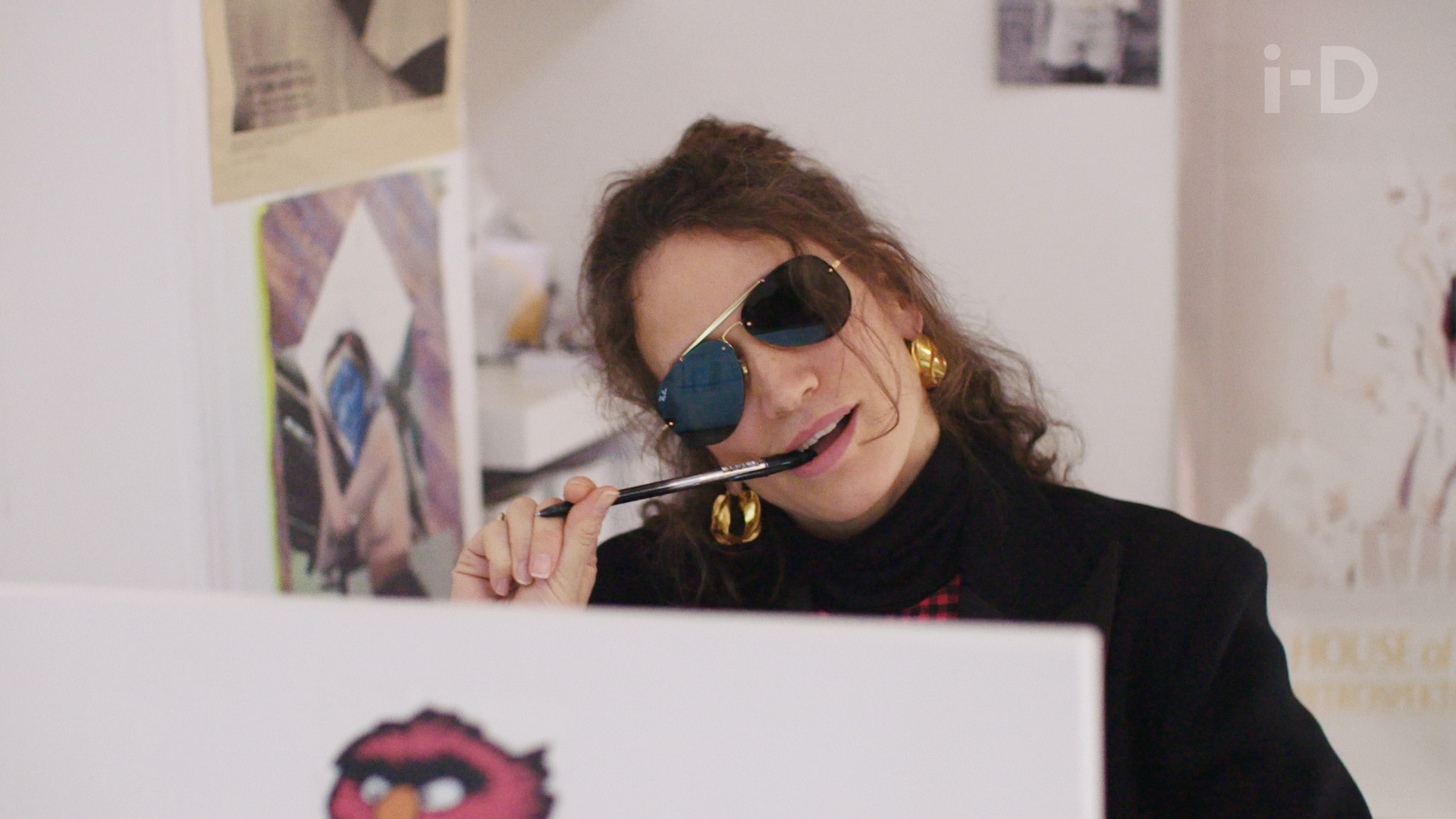Lulu Kennedy’s mega-legendary Fashion East has been quietly ripping up the London Fashion Week schedule for the past 17 years. Giving young designers the chance to be sponsored, mentored and guided to within an inch of their lives; she’s had a hand to play in the stories of Martine Rose, of Grace Wales Bonner, of Simone Rocha. She’s supported Kim Jones, championed Gareth Pugh and sat there beaming with pride at last year’s Fashion Awards as Charles Jeffrey was handed the Menswear British Emerging Talent Award by his hero John Galliano. She’s got a flippin’ MBE, for goodness sake! Believe it, fashion fans — it’s the truth.
As the third instalment of i-D’s documentary on the organisation hits the net, we sat down with its founder and director, to get her tips on what it takes to make the leap from fashion graduate to fully fledged designer.
What’s Fashion East all about then, Lulu?
Fashion East is a non-profit project for young designers that are maybe coming out of college and thinking of setting up their own brand. We guide them through their first few shows and all the stuff behind the scenes that goes into having a business.
Was there a catalyst for starting it?
Fashion East came about really organically purely because I was friends with fashion designers; I was very aware of all their struggles and the need for things like someone to organise their show. And honestly, it started from that premise, really. It was like, you make the clothes and do the creative and we will take care of all that other stuff.
What was London fashion like at the time?
When we started out London Fashion Week was in a funny kind of stage where lots of the big names had gone to Paris, and it was feeling a bit bleak. When we first started, there wasn’t really anyone doing something similar. So, yeah, we definitely got people excited and motivated in supporting young talent.
Fashion East removes that element of privilege or elitism, doesn’t it? It’s sort of like anyone can have a go if they’re good enough.
Yeah, we are quite aware that fashion is cliquey and we don’t want to end up being like that, so we try when we look at people’s applications to just have a really fair open mind. We are very aware that some kids are coming from more difficult backgrounds, and I’m just conscious of that I suppose. They might not be slick yet or might not have the money or materials and resources, but if there’s talent there you can see the spark.
Fashion East is non-profited too. Where exactly does the money come from?
The way Fashion East is funded is predominantly the Old Truman Brewery, which is a patron, and keeps it going throughout the year. I’m talking the office, our wages, which is an incredible privilege and it’s been like that for all these years. Then the shows are paid for by really long term supporters Topshop and Topman. They’ve been incredible all these years, from 2003, which is pretty mad. So, they pay for the shows. They give the designers their bursary of money. And we take them to Paris with a small amount of money we get from the government. So, yeah. We could do with a lot more!
Can you spell out a little bit what the process of picking the designers is?
So, applications work in that people email them through. We sit as a team and have a look and get together a short list which we then share with a panel. We have a panel made up of editors, buyers, stylists, other designers; to give their point of view as well. Those kind of people, that know about the industry, that know and care and have an opinion. They’re very instrumental in helping us choose who feels relevant.
What would it take for someone to be a part of Fashion East? What kind of qualities do you look for in designers?
So, I think when people send in their applications it’s better to be short, but have some really strong visuals. To edit the weaker stuff out. Because that’s what you’re going to be doing when it comes to show time anyways. So, short, sweet, and to the point.
That’s all you need?
I think so. A couple of really strong images can catch out eye. Enough that you can sort of look past the fact that it’s badly sewn. And go, “there’s something here… there’s an aesthetic.” Even if they just sort of send some research images that grab you.
Why is it important to you to represent and support the next generation of designers?
I mean, I guess… I wouldn’t know what else to do. I mean, that creativity has to be supported and looked after and protected and… I don’t ever stop to think about why we’re doing it. It’s just what we do. It’s like a foster family isn’t it? I don’t know why we don’t just fully adopt them. You know, why are we only working with them for such a short time? We should, you know, be an agency. Do things properly. But then I don’t think that would suit the needs of the designers. Sometimes I think why don’t we do solo shows? Why do we always have to have a group show? So, yeah, I’m always questioning. But not so much why are we doing it. The answer is there. Just look at their work! It’s just brilliant. I can’t think of anything I’d like to do more.
